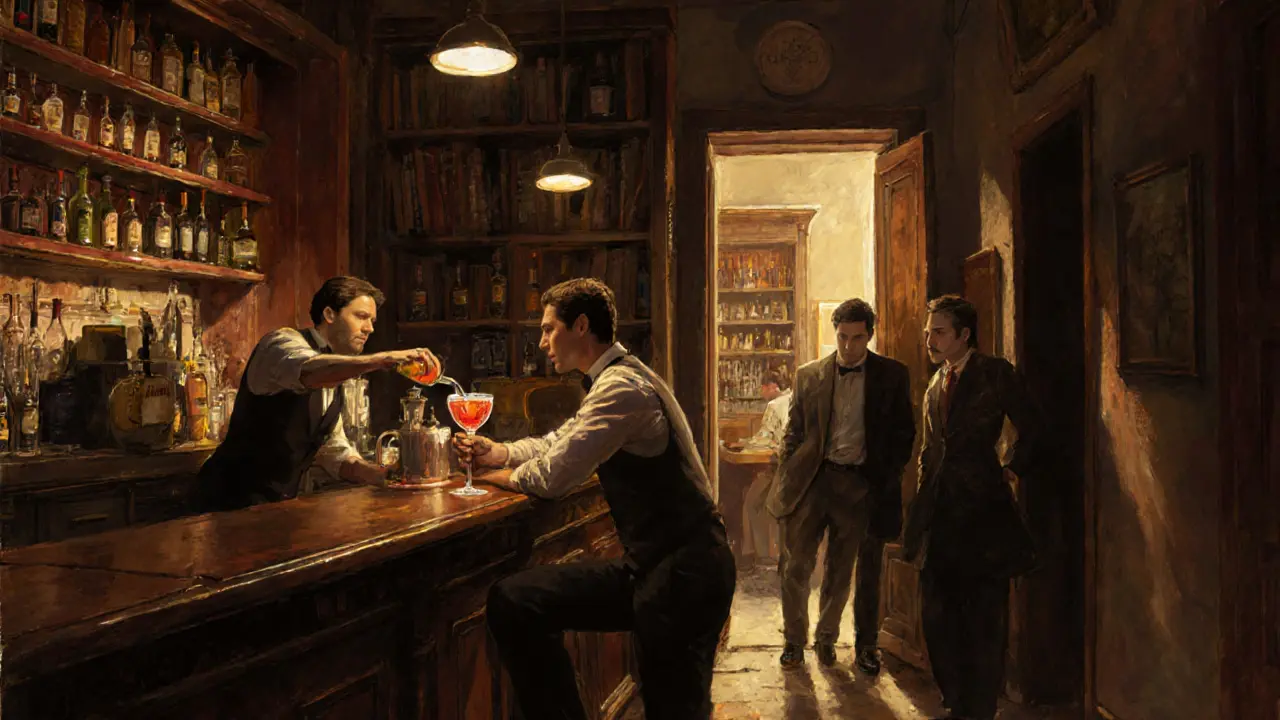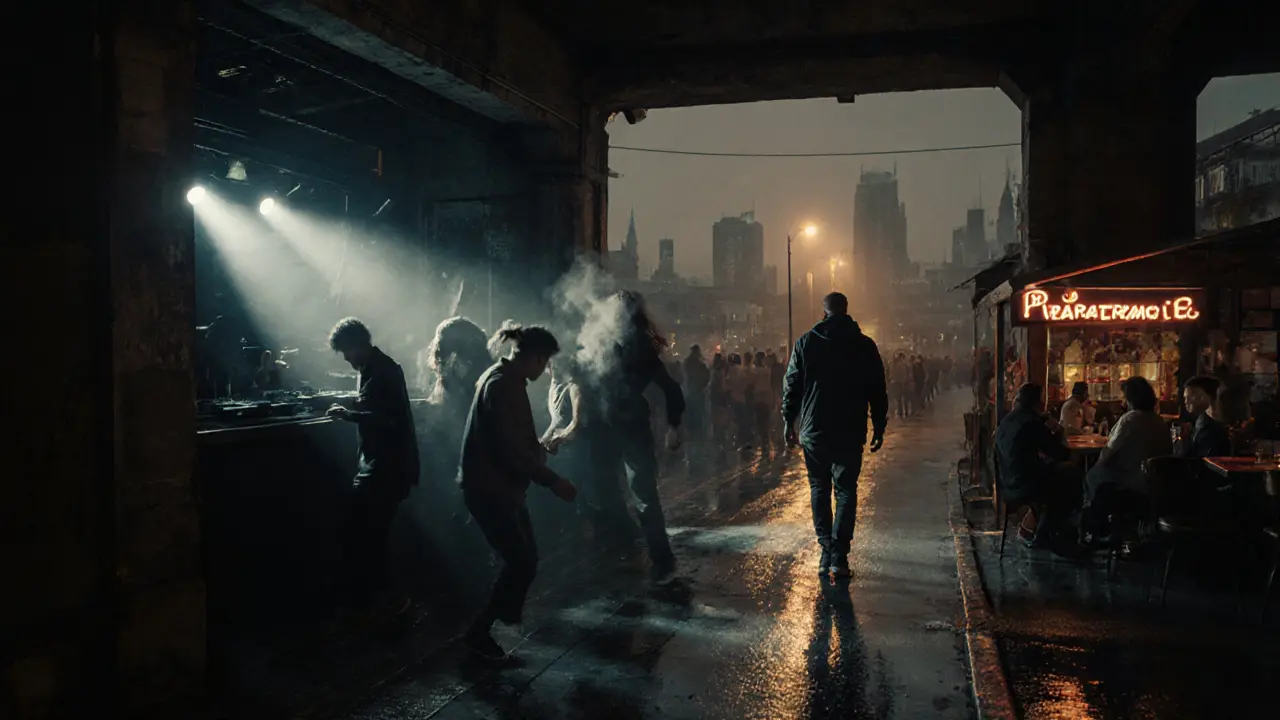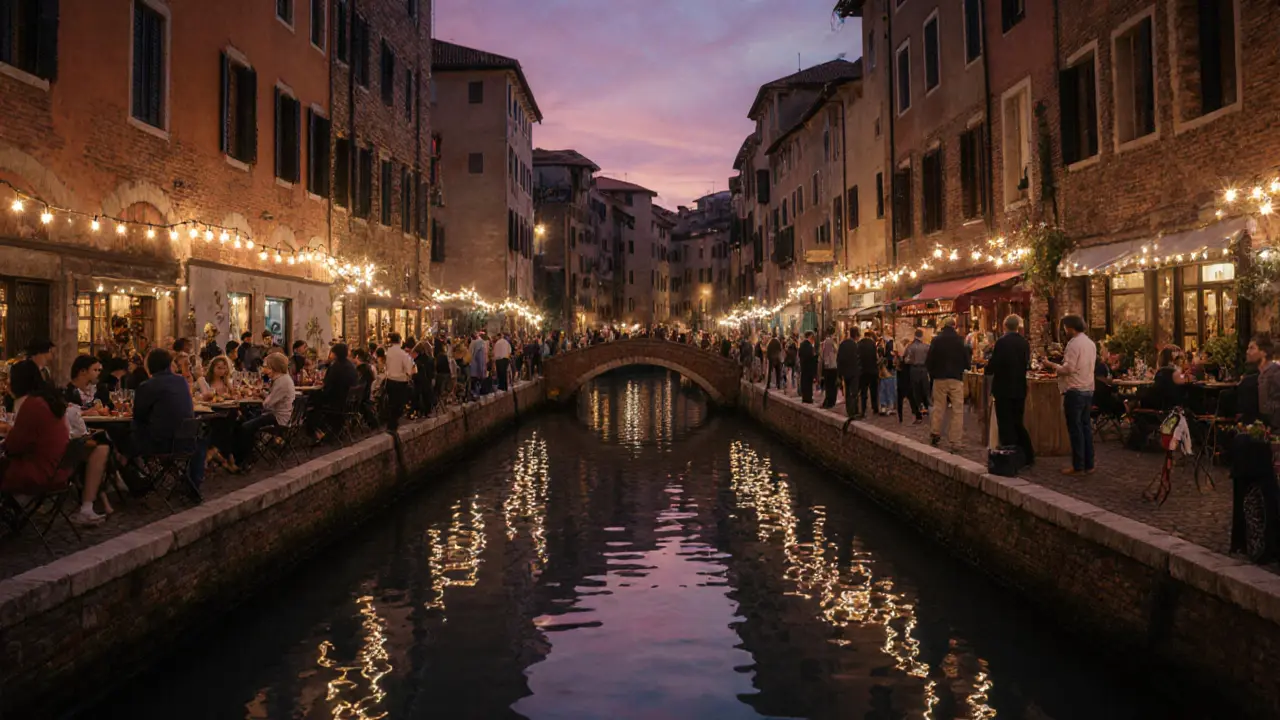Milan doesn’t sleep when the sun goes down. While it’s known for fashion and design, the city’s real pulse kicks in after 10 p.m. You won’t find strip clubs or tourist traps here-just a mix of hidden speakeasies, rooftop lounges, underground techno basements, and historic wine bars that locals swear by. If you want to experience Milan after dark like a real Milanese, skip the guidebook lists and head where the people who live here actually go.
Start in Navigli: Canals, Cocktails, and Crowd Energy
The Navigli district is where Milan’s nightlife began-and still thrives. Two canals, lined with old brick warehouses turned into bars, stretch from Porta Genova to the city center. Come Friday or Saturday, the sidewalks are packed with people sipping Aperol spritzes, laughing over charcuterie boards, and dancing to live jazz drifting from open windows.
Don’t miss La Baita. It’s not fancy, but it’s authentic. The bartenders pour craft gin cocktails with local botanicals, and the outdoor terrace overlooks the water with string lights hanging just low enough to feel intimate. Walk just 100 meters down the canal to Il Gatto Nero, where the playlist leans into soul and funk, and the crowd is mostly locals in their 30s and 40s. No cover, no dress code, just good vibes and cheap beer.
Pro tip: Go before 11 p.m. If you show up later, you’ll be standing in line for a table. Locals know this. Tourists don’t.
Brera: Sophistication Meets Secret Spots
Brera is Milan’s answer to Paris’s Left Bank-cobblestone streets, art galleries, and quiet courtyards. By day, it’s quiet. By night, it transforms. This is where Milan’s creatives, writers, and designers unwind after work.
Bar Basso is legendary. It’s where the Negroni Sbagliato was invented in 1972. You’ll find it tucked into a narrow alley off Via Brera. The bar is small, dim, and packed. Order the original Sbagliato-it’s bitter, fizzy, and perfect. Don’t expect a menu. The bartenders know what you want before you speak.
For something quieter, head to Bar del Fico. It’s hidden behind a bookshelf in a courtyard. You need to know the code to get in. Locals text the bartender ahead of time to reserve a spot. Inside, it’s all velvet couches, vintage vinyl, and whiskey neat. No music, just the clink of ice and low conversation.
Porta Ticinese: From Underground Clubs to Late-Night Pizza
If you want to dance until sunrise, Porta Ticinese is your spot. This neighborhood used to be gritty. Now it’s the epicenter of Milan’s underground scene. The clubs here aren’t in fancy buildings-they’re in old factories, warehouses, and even a former train station.
La Scala Club is the most famous. It’s not the biggest, but it’s the most consistent. They book rising DJs from Berlin, London, and Athens. The sound system is top-tier, the lighting is minimal, and the crowd is serious about the music. Doors open at 11 p.m., but the real energy hits after 2 a.m. Cover is €10-€15, and it’s worth every euro.
After the club, walk five minutes to Pizzeria Il Pizzico. Open until 4 a.m., they serve thick-crust pizza with truffle oil and burrata. It’s the only place in Milan where you can eat pizza at 3 a.m. and not feel like a tourist. Locals eat here after every night out.

Corso Como: Where the Elite Unwind
If you’re looking for glamour, head to Corso Como 10. It’s not a club-it’s a lifestyle. The complex includes a design store, a restaurant, and a rooftop bar that opens at dusk. The vibe is upscale but relaxed. Think silk shirts, designer sunglasses, and quiet conversations over Aperitivo.
The rooftop bar, Corso Como 10 Terrace, has one of the best views of the city skyline. The cocktails are inventive-think lavender-infused gin with smoked salt. The music is chill house, not loud enough to shout over. It’s the kind of place where you’ll see models, architects, and Italian film directors all in the same corner.
It’s not cheap. Drinks start at €18. But if you want to feel like you’re in a movie set of Milan’s elite, this is where you go.
What to Avoid in Milan’s Nightlife
There are places that look great on Instagram but are terrible in person. Avoid:
- Bars near the Duomo after 9 p.m.-they’re overpriced, crowded with tourists, and play Top 40 on loop.
- Clubbing in the CityLife area-it’s new, sterile, and feels like a mall with strobe lights.
- Any place that charges €20+ for a cocktail without a clear reason. Milan’s best drinks are often under €12.
Also, don’t expect 24-hour clubs. Most places close by 4 a.m. The city has strict noise laws. If you want to party until dawn, you’ll need to find a private event or a secret party-those are usually announced on Instagram stories or WhatsApp groups.

When to Go and How to Dress
Milan’s nightlife isn’t about flashy outfits. It’s about confidence. You don’t need designer labels. But you do need to look put together.
Men: Dark jeans, clean sneakers or loafers, a fitted shirt or sweater. No shorts, no tank tops, no flip-flops.
Women: A little black dress, tailored trousers, or a stylish jumpsuit. Heels aren’t required, but sandals or boots work better than sneakers.
Weekends are packed. Weeknights are quieter but more authentic. If you want to blend in, go on a Tuesday or Wednesday. You’ll get better service, better music, and real conversations.
How to Get Around After Dark
Milan’s metro runs until 1:30 a.m. on weekdays and 2:30 a.m. on weekends. After that, you’ll need a taxi or Uber. The city has a reliable app called FreeNow-it’s cheaper than Uber and accepts cash.
Walking is safe in most nightlife areas, but avoid empty side streets after midnight. Stick to main roads. Navigli, Brera, and Porta Ticinese are all walkable if you stay on the main strips.
Where to Find Real Milanese Nightlife
The secret? Talk to bartenders. Ask them: “Dove vanno i locali dopo mezzanotte?” (Where do locals go after midnight?). They’ll point you to a basement bar, a hidden courtyard, or a friend’s apartment party. That’s how you find the real stuff.
Don’t rely on apps like Yelp or TripAdvisor. They’re full of fake reviews from tourists. Instead, check Instagram hashtags like #milannightlife or #naviglilife. Look for posts tagged with geolocation from the past week. If a place has 50+ local tags, it’s worth checking out.
And if you’re lucky enough to be invited to a terrazza privata-a private rooftop party-you’re in. These are the nights you’ll remember. No bouncers. No tickets. Just friends, wine, and the skyline.
Is Milan nightlife safe at night?
Yes, Milan is one of the safest major European cities for nightlife. The main areas-Navigli, Brera, Porta Ticinese-are well-lit and patrolled. Avoid isolated alleys after 2 a.m., but stick to busy streets and you’ll be fine. Most bars close by 4 a.m., and the metro runs until 2:30 a.m. on weekends.
What’s the best night to go out in Milan?
Friday and Saturday are the busiest, but Tuesday and Wednesday are better if you want to avoid crowds. The music is often better on weeknights because clubs book experimental DJs who don’t play for big crowds. Plus, you’ll get better service and more space to move.
Do I need to book ahead for Milan bars and clubs?
For popular spots like Bar Basso or Corso Como 10 Terrace, yes. Call or message ahead. For most clubs in Porta Ticinese, no-just show up before midnight. The underground places don’t take reservations. They rely on word-of-mouth and vibe, not tickets.
What’s the average cost for a night out in Milan?
For a good night out, budget €40-€70. That covers aperitivo (€10-€15), two cocktails (€12-€18 each), club cover (€10-€15), and late-night pizza (€8-€12). If you’re splurging on a rooftop bar or designer cocktail, add another €20-€30.
Can I find English-speaking staff in Milan nightlife spots?
In tourist-heavy areas like near the Duomo, yes. In authentic spots like Navigli or Porta Ticinese, many bartenders speak little English-but they’ll still make you a great drink. Learn a few Italian phrases: “Un Aperol, per favore,” “Quanto costa?”, “Dove vanno i locali?” They’ll appreciate it, and you’ll get better service.
